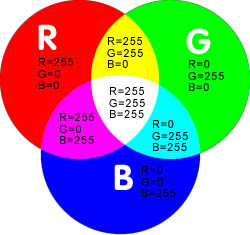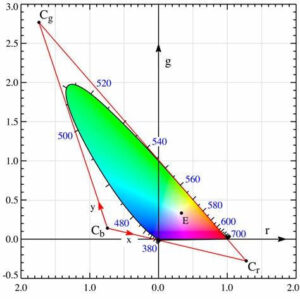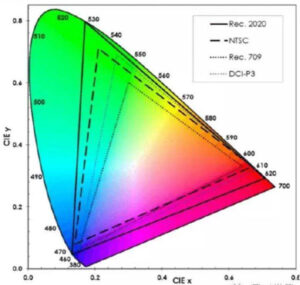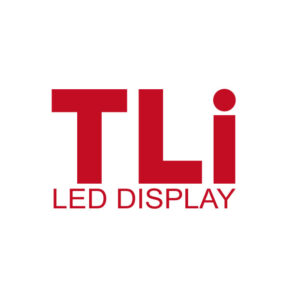Since the 1980s, LED display technology has continued to evolve, application scenarios have been continuously enriched, and the market size has been growing day by day. As a leading enterprise in the LED display industry,In the information age, display products as a contact interface between humans and information, greatly affect people’s lives. With the sharp increase in the amount of information and the acceleration of the speed of update, especially the replacement of traditional single text and video information by multimedia digital audio and video information, people have put forward higher requirements for display effects. The color gamut of the display directly affects the color expression and color reproduction of the display screen, which is the focus of attention of the current display products.
This paper will start from the principle of chromatography, elaborate on different color gamut standards, and deeply analyze the relationship between the color gamut range of LED display and color expression and color reproduction.
Principles of chromaticity
We live in a colorful world, and the different colors that humans can feel are due to the visual response produced by the human eye receiving different wavelengths of light signals. There are two kinds of photoreceptor cells on the retina of the human eye, rod cells and cone cells, which mainly play a role in the case of dark light and have no color recognition function; and the cone cells play a role under bright conditions, and the cone cells are divided into red-sensitive cone cells, green-sensitive cone cells and blue-sensitive cone cells, which are the most sensitive to red, green and blue. According to the principle of color mixing, almost all colors in nature can also be composed of red, green and blue tricolor, and the visual response of three kinds of cone cells on the retina to red, green and blue tricolor light can be combined to obtain different color feelings. Based on the above principle, modern displays usually use red, green and blue as the three primary colors, according to the visual characteristics of the human eye and the principle of color mixing, the three primary colors can be mixed in different proportions to restore most of the colors in nature, as shown in Figure 1. Color mixing principle can be quantitatively described using the color matching equation, for the color C that needs to be displayed, its color equation can be expressed as C[C]=R[R]+G[G]+B[B], wherein C, R, G, B represent the relative intensity of matching color light, red light, green light, blue light, the color matching equation represents the red primary color of R units, the green primary color of G units and the blue primary color of B units are combined and mixed, which can match the C color of C units, R, G, B is called the three stimulus values.

Displays the principle of tri-primary color mixing
CIE1931 standard chromaticity system
In order to facilitate comparison and unification, in 1931, the International Commission on Illumination (CIE) proposed a standard observer and color coordinate system, using 700nm, 546.1nm, 435.8nm as the R, G, B primary color wavelengths, normalizing the color equation to obtain [C]=R/(R+G+B)[R]+G/(R+G+B) [G]+B/(R+G+B) [G]+B/(R+G+B) [B], defining the chromaticity coordinates r,g,b, where r = R/(R+G+B), g= G/( R + G + B), b = B / (R + G + B), then [C] = r [R] + g [G] + b [B], since r + b + g = 1, it is known that any two of the three stimulus values can quantitatively characterize the matching color C, based on the above, CIE 1931 RGB color map using (r, g) two-dimensional coordinates quantitatively characterized color, as shown in Figure 2.
 CIE 1931 RGB color map
CIE 1931 RGB color map
Due to the problem of color matching test, there are negative values in the CIE RGB color map, which is not conducive to calculation and understanding, so CIE proposed the CIE 1931 XYZ chromaticity system, which replaces the three primary colors of the RGB system with the hypothetical three primary colors XYZ, and mathematically converts the original RGB color map to obtain the three stimuli values of R, G, B corresponding to the three stimuli values in the RGB system X, Y, Z, correspondingly, the color equation of color C can be expressed as C[C]=X [X]. ]+Y[Y]+Z[Z], normalize the color equation to [C]=X/(X+Y+Z)[X]+Y/(X+Y+Z)[Y]+Z/(X+Y+Z)[Z], so that x=X/(X+Y+Z), y= Y/(X+Y+Z), z= Z/(X+Y+Z), since x+y+z=1, only through x and y can determine a color in the two-dimensional plane, with x, y as the horizontal and vertical coordinates, that is, to obtain CIE 1931 as shown in Figure 3 XYZ color map. In the CIE 1931 XYZ color map, the visible light spectral color connection from 380 nm to 780 nm yields a horseshoe curve, and the number annotated next to the horseshoe curve is the spectral wavelength value. Located on the horseshoe curve is a monochromatic light with maximum saturation, and the closer to the interior of the horseshoe curve, the less saturation of the color and the closer the color is to the white light.
Display color gamut and color gamut standards
Color gamut can be understood as the range of colors that the display device can display, for the most commonly used three primary color display in modern display, according to the principle of color mixing, the color coordinates of the red, green and blue primary colors used by the display device are positioned in the CIE 1931 XYZ color map, and then the three coordinate points are connected to obtain the corresponding color gamut triangle of the display device. The three vertices of the color gamut triangle are the color coordinates of the red, green, and blue primary colors of the display device, and the area enclosed by the triangle is all the colors that can be obtained by the three primary colors of the display device, that is, all the colors that the display device can express, the larger the area of the triangle, indicating that the larger the color gamut range of the display device, the richer the color that can be displayed.
In order to facilitate the transfer of information, the display industry has developed a series of color gamut standards, of which the commonly used standards are mainly NTSC, Rec.709, DCI-P3 and Rec.2020 color gamut standards, as shown in Figure 3.
 A standard range of common gamuts
A standard range of common gamuts
The NTSC color gamut was a standard customized by the National Television Standards Board in 1953 for crT color televisions that had just appeared at the time, and was too old to be used on modern monitors. More importantly, modern display content creators almost do not use NTSC as a workspace, which means that display products with NTSC as a color gamut indicator cannot establish an inevitable connection with display content.
Rec.709 color gamut is the color gamut standard published by the International Telecommunication Union in 1990, which is used as the color standard for high-definition display (HDTV) and is currently the most widely used standard. With the development of computer technology, in 1996 Microsoft and HP, Mitsubishi, Epson and other manufacturers developed sRGB color standards, deterred by the influence of Microsoft’s strong user group, the vast majority of digital image acquisition devices, such as digital cameras, digital cameras, scanners, displays, etc. support the sRGB standard. This gamut standard is exactly the same as the Rec.709 gamut standard, which makes the Rec.709 gamut standard the most widely used color gamut standard at present.
DCI-P3 color gamut is a wide color gamut standard introduced by the American film industry in 2005, is currently one of the most commonly used color standards for digital cinema equipment, as shown in Figure 3, compared with the Rec.709 color gamut, DCI-P3 color gamut in the green and red areas is wider, the color gamut can be rendered compared to Rec.709 color gamut is 25% larger. With the advent of the 4K era, the original Rec.709/sRGB has been unable to meet the display needs, and more and more display devices have begun to use the DCI-P3 standard as the display color gamut.
The Rec.2020 gamut standard is the color gamut standard published by the International Telecommunication Union in 2012 for Ultra Hd Devices (4K & 8K), as shown in Figure 3, the Rec.2020 gamut range is the broadest of all current color gamut standards.
As shown in Figure 3, among the above several color gamut standards, the Rec.709 color gamut has the smallest area, the DCI-P3 color gamut can fully cover the Rec.709 color gamut, and the Rec.2020 color gamut can fully cover the DCI-P3 color gamut. Although the Rec.709 color gamut area is only 72% of the NTSC color gamut area, the NTSC color gamut does not completely cover the Rec.709 color gamut in the blue area, in fact, the NTSC color gamut can only cover 82% of the Rec.709 color gamut.
When the display device’s gamut range can completely cover the gamut range of the display data, the display device can fully render the colors in the display data, restoring the creative intent of the video or picture creator. At present, the color gamut standard used for picture or video source data is usually rec.709 color gamut standard, DCI-P3 color gamut standard and Rec.2020 color gamut standard, and no picture or video source uses NTSC color gamut as the standard. Since the NTSC gamut standard does not fully cover any of the three color gamut standards of Rec.709, DCI-P3 and Rec.2020, the display device with the NTSC gamut as an indicator cannot establish an inevitable relationship with the display data (with Rec.709 gamut, DCI-P3 gamut or Rec.2020 gamut as the gamut standard). The NTSC color gamut indicator of the display device cannot show the color gamut coverage of Rec.709, DCI-P3 and Rec.2020, so it cannot show the color reproduction ability of the picture or video source data, which has no reference value for consumers.
Summary
Based on the principle of chromaticity, this paper elaborates on different color gamut standards, and analyzes the relationship between the color gamut range of the display and the color expression and color reproduction. Based on the above analysis, it can be seen that the traditional LED display products take the NTSC color gamut as the parameter index, which cannot characterize the color reproduction ability of the display to the picture or video source data, and the rec.709, DCI-P3 or Rec.2020 color gamut as the parameter index is the scientific characterization method for the color expression of LED display products.

Jack
Sales Manager
Jack
Hello my friend, This is Jack from TLi LED. What can I do for you today?